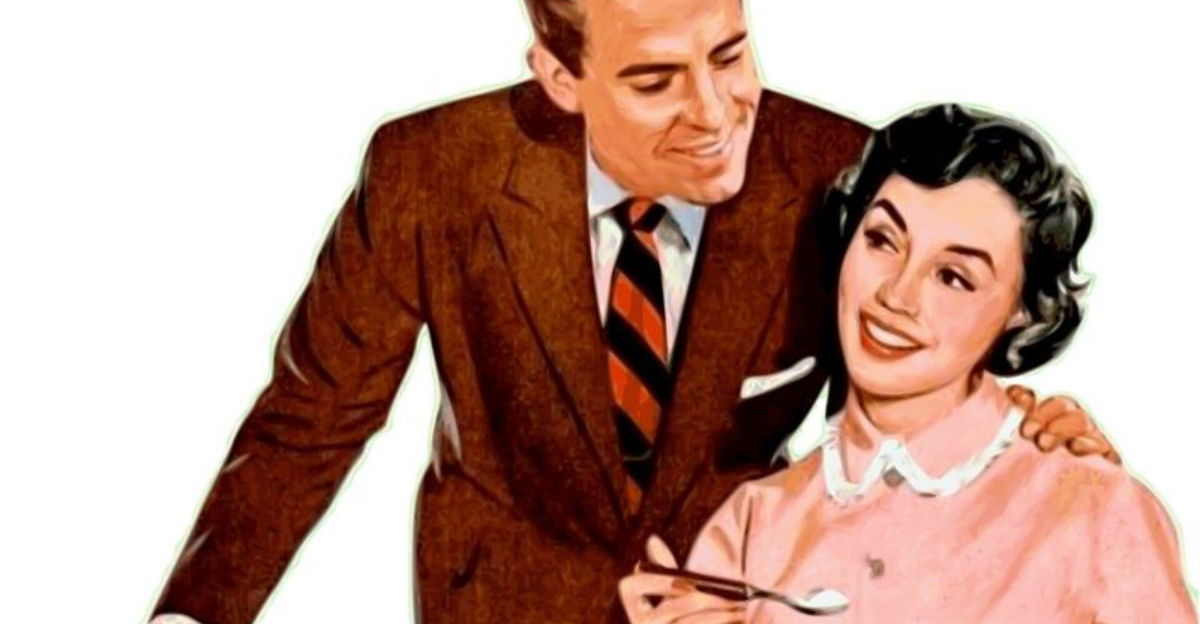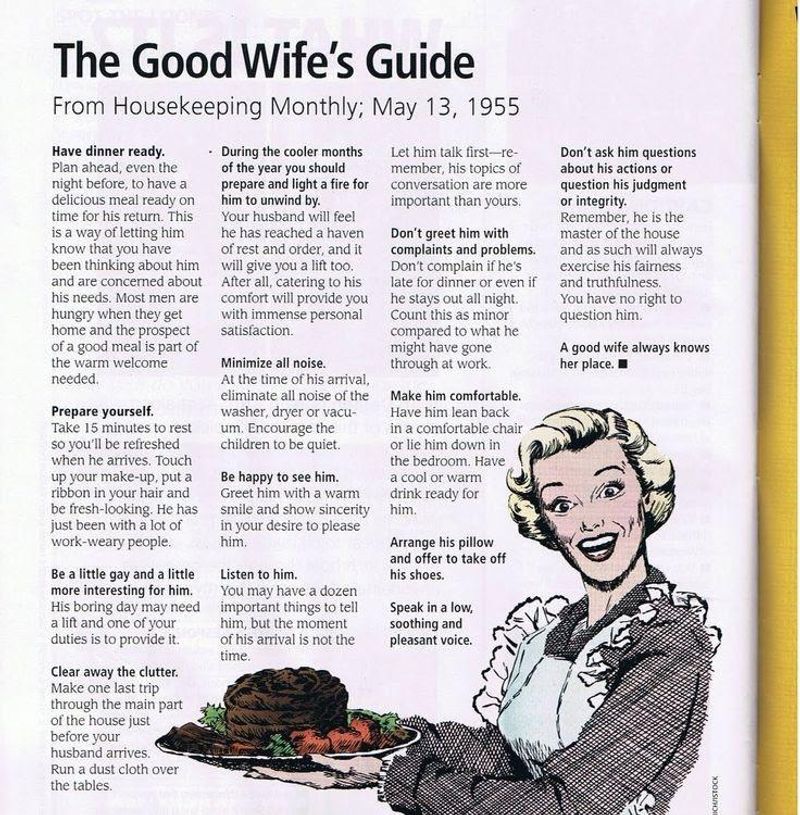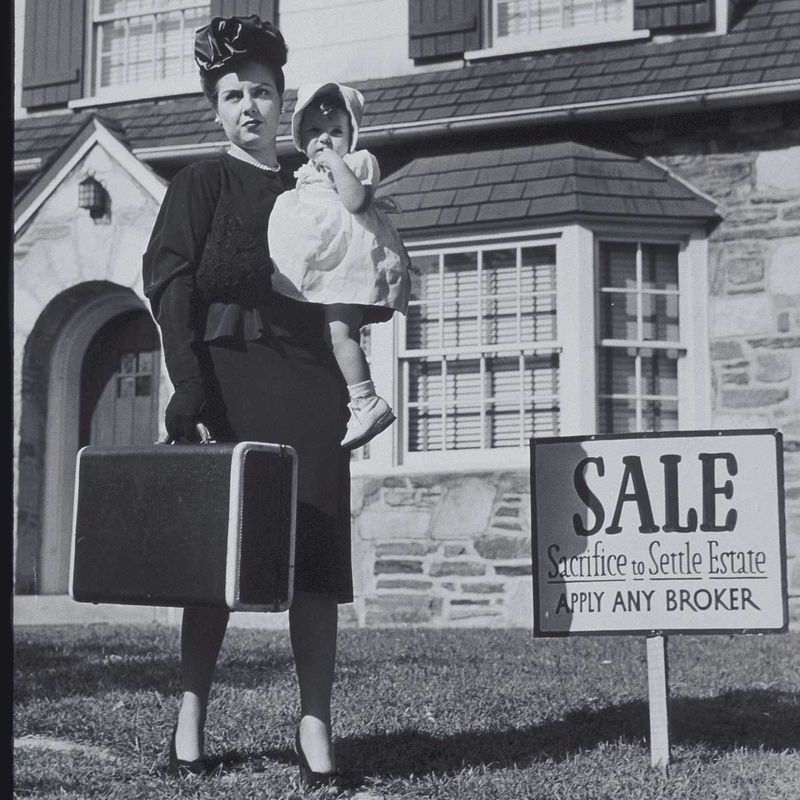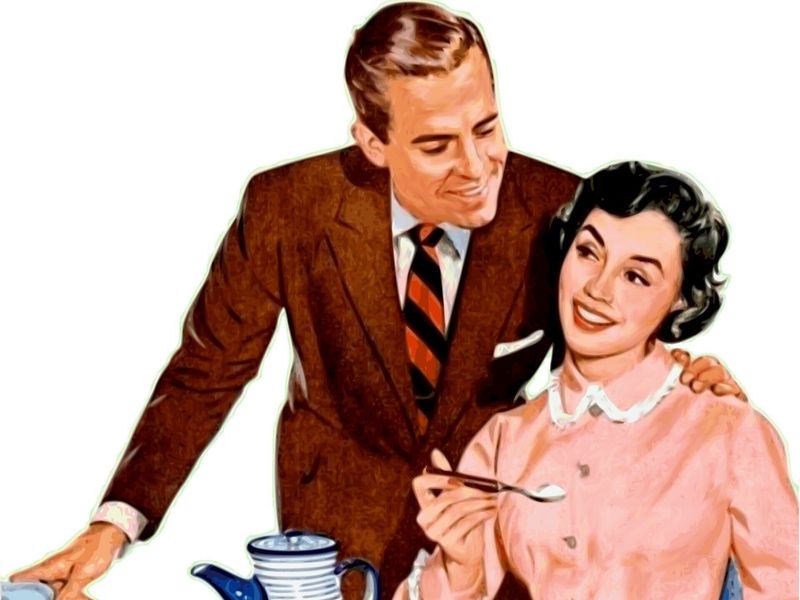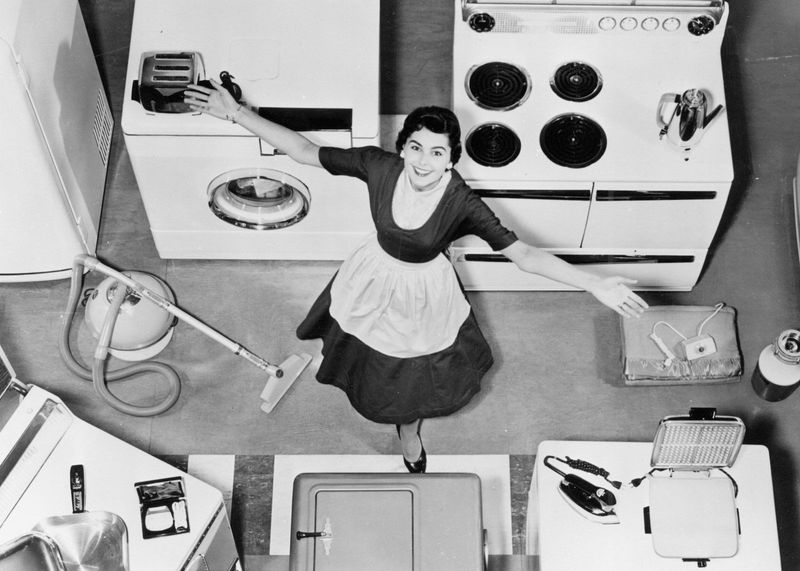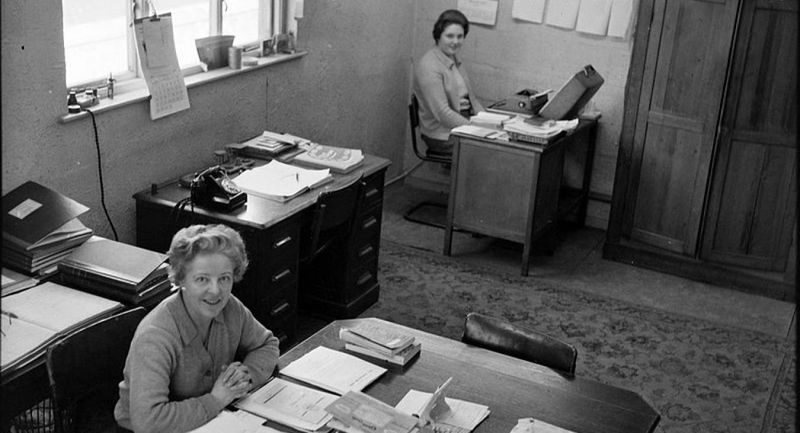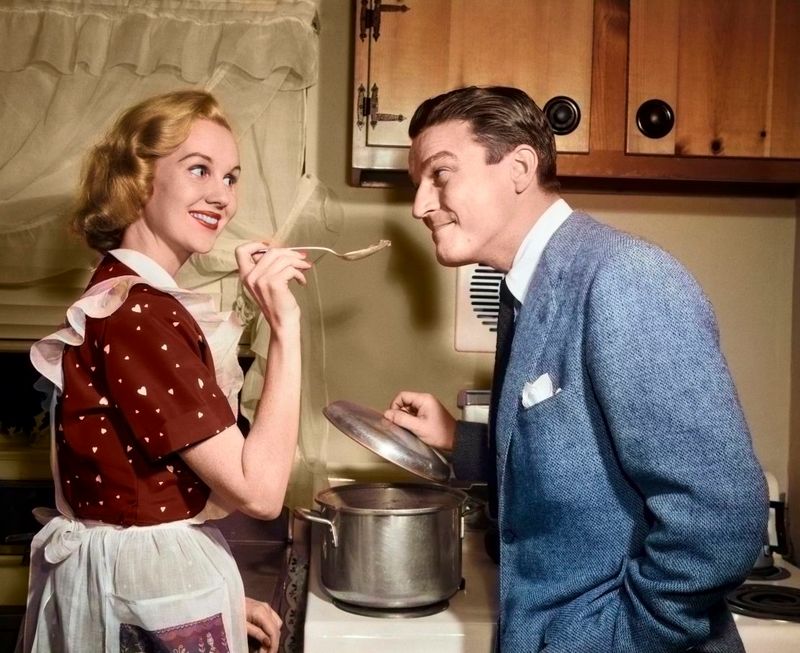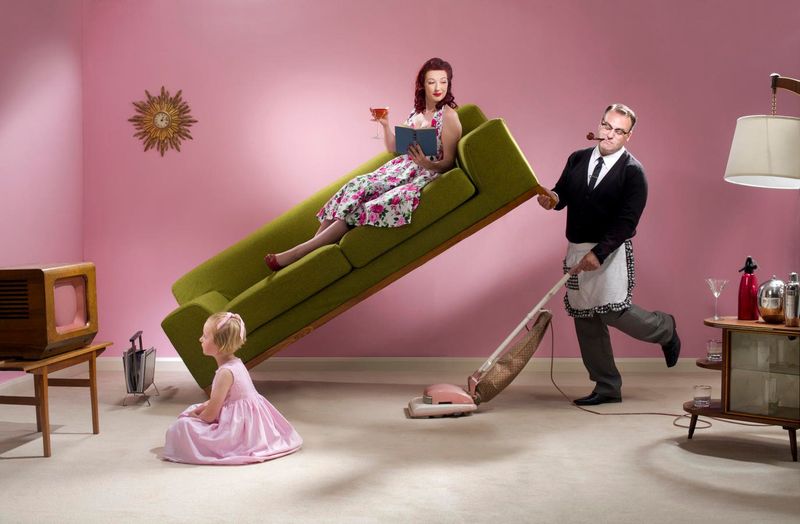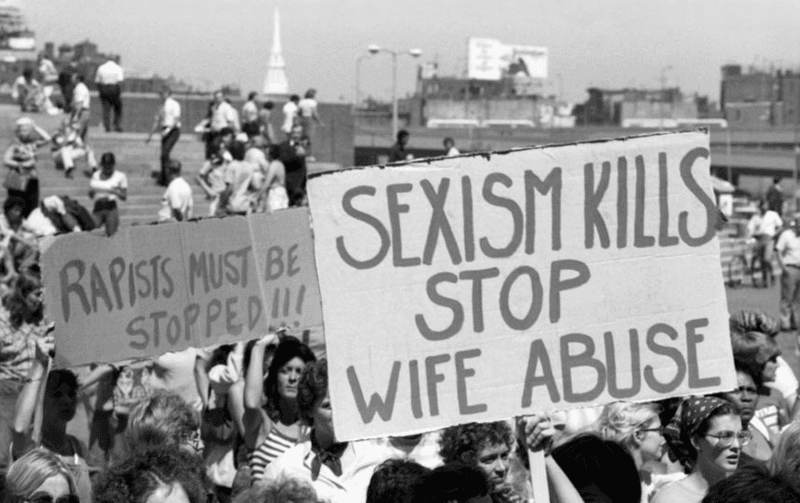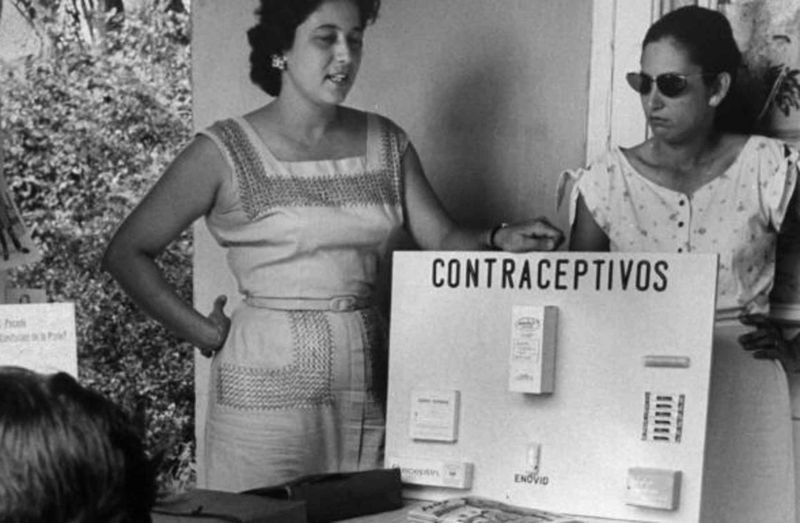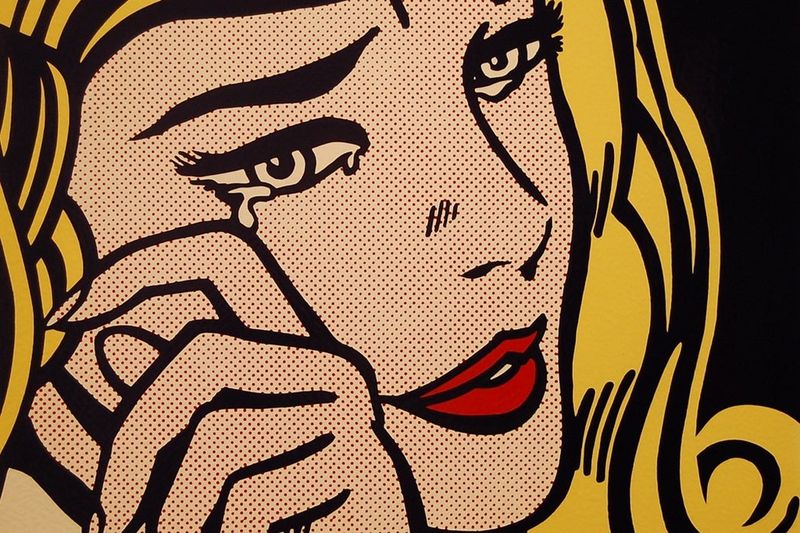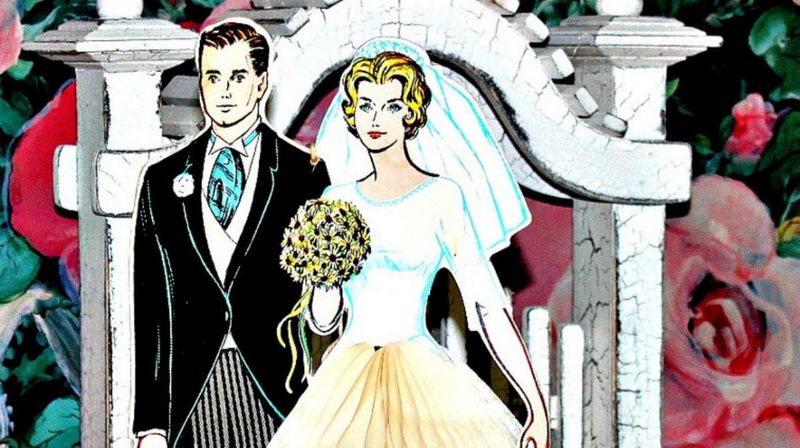Step back in time to the 1950s, when marriage looked vastly different than it does today. Behind the picture-perfect images of suburban bliss lurked a set of unwritten rules that shaped women’s lives in profound ways.
These marriage norms weren’t just social customs – they were often backed by law and enforced through intense social pressure.
1. Wives Were Expected to Obey Their Husbands
The wedding vow to “love, honor, and obey” wasn’t just pretty language – it was a binding social contract. Women were expected to defer to their husbands in all matters, from financial decisions to what to cook for dinner. This power imbalance wasn’t just encouraged by etiquette books; it was reinforced by religious teachings, legal structures, and family expectations. The ideal 1950s wife was seen as supportive, compliant, and unfailingly loyal to her husband’s wishes.
2. The Husband Was Legally the ‘Head of Household’
Marriage in the 1950s meant entering a legal partnership where the husband held most of the cards. Men were automatically designated as the official decision-maker in everything from tax filings to medical choices. This wasn’t just tradition – it was codified in law. A wife needed her husband’s signature to open bank accounts, apply for credit, or make major purchases. His status as head of household gave him control over where the family lived and how money was spent.
3. Divorce Was Rare and Socially Stigmatized
Unhappily married in the 1950s? Too bad – divorce carried a devastating social penalty, especially for women. Divorced women were often viewed as morally suspect, damaged goods, or failures at their primary life purpose. Churches condemned divorce, families might disown divorcées, and employers could legally fire women for being divorced. The social pressure to stay married was so intense that many women endured terrible marriages rather than face the alternative.
4. Sex Was Considered a Wife’s Duty
Marriage manuals from the 1950s frequently reminded wives that sexual availability was part of their marital obligation. Women were instructed to never refuse their husbands, regardless of their own desires or comfort. The concept of marital rape didn’t legally exist. Once married, a woman’s consent was considered permanently given. Medical advice of the era even suggested that frigidity in wives was a psychological disorder requiring treatment.
5. Women Couldn’t Buy a House Without a Husband
Financial independence? Not for 1950s wives. Banking institutions routinely denied mortgages and loans to single women or wives applying without their husband’s signature – even if they earned their own income. Real estate agents often refused to show properties to women shopping alone. The Federal Housing Administration actually encouraged this discrimination through lending policies that favored traditional nuclear families with male breadwinners.
6. Men Controlled the Family Finances
Money management wasn’t considered women’s territory in 1950s marriages. Husbands typically received all paychecks directly, controlled all accounts, and made investment decisions without consultation. Women were given household allowances – essentially an adult version of pocket money – to cover groceries and other daily expenses. Many wives had no idea how much their husbands earned or what assets the family actually owned.
7. Homemaking Was Considered a Full-Time Job—With No Pay
The 1950s housewife wasn’t just expected to keep house – she was expected to excel at it. Women spent hours waxing floors, ironing shirts, preparing elaborate meals, and maintaining spotless homes without financial compensation. Popular magazines set impossibly high standards with articles like “How to be the Perfect Housewife” alongside ads for kitchen appliances. The economic value of this labor went completely unrecognized, leaving women financially dependent on their husbands.
8. Marriage Was Seen as the Only Path for Women
College education for women in the 1950s was often jokingly called getting an “MRS degree.” Young women were explicitly told that their education should primarily serve to make them more interesting wives and better mothers. Career ambitions were discouraged as temporary phases before marriage. Single women past their mid-twenties faced increasing social pressure, nosy questions, and the dreaded label of “spinster” or “old maid” – terms that suggested something was fundamentally wrong with them.
9. Husbands Could Forbid Wives from Working
Career aspirations took a backseat to husband’s preferences in 1950s marriages. Many employers actually required a husband’s written permission before hiring a married woman, and could legally fire women who married while employed. Job listings were openly segregated into “Help Wanted – Male” and “Help Wanted – Female” sections. The better-paying positions were almost exclusively in the male category. Many working wives handed their paychecks directly to their husbands, having little say in how their earnings were spent.
10. Wives Were Expected to Serve Dinner the Moment the Husband Got Home
“Have dinner ready” topped every 1950s marriage advice list. Women planned their entire day around having a hot meal on the table precisely when their husband walked through the door – regardless of their own schedule or the children’s needs. Good wives were also instructed to minimize noise, freshen their makeup, and put on a smile before he arrived. The evening meal was portrayed as a critical moment that could make or break marital harmony, with the responsibility falling entirely on the wife.
11. Appearance Was a Wife’s Responsibility
Magazine articles from the 1950s routinely warned women that letting their appearance “slip” could justify a husband’s wandering eye. Women were advised to wake up early to apply makeup before their husbands saw them. Weight gain was portrayed as a moral failing in wives. Products like “reducing creams” and girdles were marketed as marriage-saving necessities. Even after childbirth, women were expected to quickly regain their figures or risk losing their husband’s interest.
12. Husbands Rarely Did Housework or Childcare
Fathers in the 1950s were expected to provide financially but were largely exempt from domestic responsibilities. Men who changed diapers or washed dishes were often mocked for doing “women’s work” or considered henpecked. Popular culture reinforced this division. TV shows portrayed bumbling fathers who couldn’t operate basic household appliances. Meanwhile, mothers managed all aspects of childcare, housekeeping, and emotional labor without acknowledgment or assistance.
13. Domestic Violence Was Considered a ‘Private Matter’
The dark reality behind many 1950s marriages was the lack of protection for abused wives. Police typically refused to intervene in what they called “domestic disputes,” treating violence within marriage as a private family matter. Women had few escape options. Shelters for battered women didn’t exist. Economic dependence, social stigma, and lack of legal recourse trapped many in dangerous situations. Some marriage counselors even advised women that abuse might be their fault for not being understanding enough of their husband’s stress.
14. Wives Couldn’t Get Birth Control Without Permission
Family planning wasn’t a woman’s individual choice in the 1950s. Married women often needed their husband’s written consent to obtain birth control, and single women were frequently denied access entirely. Many doctors refused to prescribe contraceptives to women without their husband’s approval. Some states had laws explicitly forbidding the distribution of birth control information. This lack of reproductive autonomy meant women had little control over the timing and number of pregnancies they experienced.
15. Mental Health Was Ignored—Especially for Housewives
Betty Friedan later called it “the problem with no name” – the depression and emptiness many 1950s housewives experienced despite having supposedly perfect lives. Rather than recognizing legitimate dissatisfaction, doctors diagnosed women with “housewife syndrome” or “nerves.” The treatment? Tranquilizers like Miltown and Valium became known as “mother’s little helpers.” Instead of addressing the restrictive social conditions causing women’s unhappiness, the medical establishment medicated them into compliance.
16. Marital Counseling Favored the Husband’s Perspective
When marriages hit rough patches in the 1950s, counseling typically focused on fixing the wife’s attitude, not addressing the husband’s behavior. Popular marriage advice books like “The Good Wife’s Guide” placed the burden of marital happiness squarely on women’s shoulders. Counselors routinely advised unhappy wives to be more understanding, more attractive, and less demanding. A wife’s complaints about her husband were often dismissed as nagging or unreasonable expectations.
17. Women Were Taught to Keep Quiet About Infidelity
Discovering a husband’s affair in the 1950s? The standard advice was shocking by today’s standards: keep quiet and examine what you did wrong. Women’s magazines suggested wives should blame themselves for not being attractive or attentive enough. Meanwhile, male infidelity was often normalized as an inevitable response to a wife’s shortcomings. Advice columns suggested serving better meals, wearing sexier nightgowns, or showing more interest in his hobbies to win back a wandering husband.
18. Husbands Had Legal Authority Over Children’s Lives
Mothers may have handled daily childcare, but fathers held the legal authority in 1950s families. Important decisions about education, medical care, and religious upbringing legally required only the father’s consent in many jurisdictions. In custody disputes, courts often favored fathers despite minimal involvement in child-rearing. The legal concept of “patria potestas” – paternal power – gave fathers rights over children that mothers simply didn’t have. This imbalance left many mothers powerless in decisions affecting the children they raised.
19. A Woman’s Identity Was Defined by Her Marital Status
Upon marriage, a 1950s woman didn’t just take her husband’s name – she often lost her first name in formal situations. Being addressed as “Mrs. John Smith” rather than “Mrs. Jane Smith” symbolized how marriage subsumed a woman’s identity. Bank accounts, property deeds, and official documents listed wives under their husband’s names. Widows sometimes discovered they had no legal identity apart from their deceased husbands. This naming convention reinforced the idea that women existed primarily in relation to men.
20. Prenuptial Agreements Were Virtually Unheard Of
Financial protection before marriage? The concept barely existed for 1950s brides. Women typically entered marriage without legal safeguards for their assets or earning potential. Upon marriage, many states’ laws automatically transferred a woman’s property to her husband’s control. Women who owned businesses or inherited family property often lost legal authority over these assets when they married. This lack of financial protection left divorced or widowed women vulnerable to poverty after years of unpaid domestic labor.
21. Marriage Was Framed as a Woman’s Ultimate Achievement
From childhood, girls in the 1950s were conditioned to view marriage as life’s crowning achievement. Toys like miniature kitchen sets and baby dolls prepared them for their “real” future roles. High school guidance counselors steered bright young women away from ambitious careers, suggesting they’d only work until marriage anyway. Unmarried career women were often portrayed in media as lonely, bitter, or somehow defective. This messaging created tremendous pressure to prioritize finding a husband above all other life goals.
